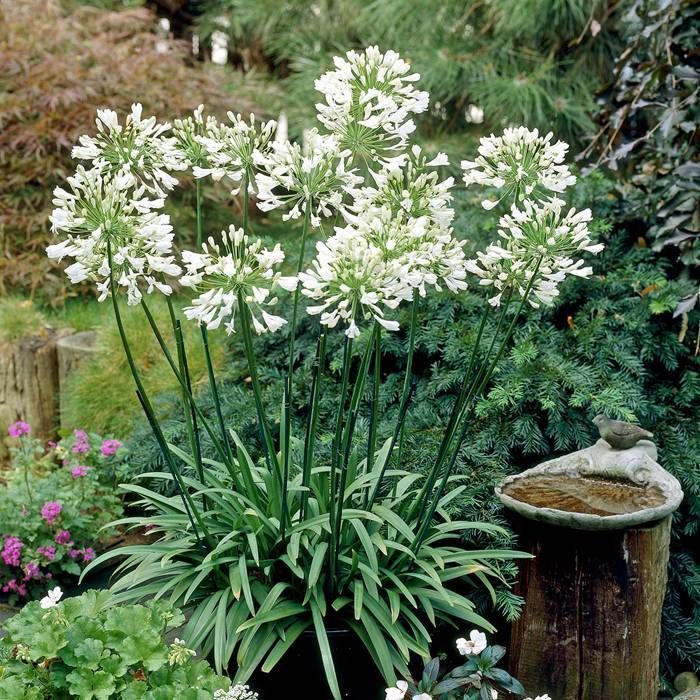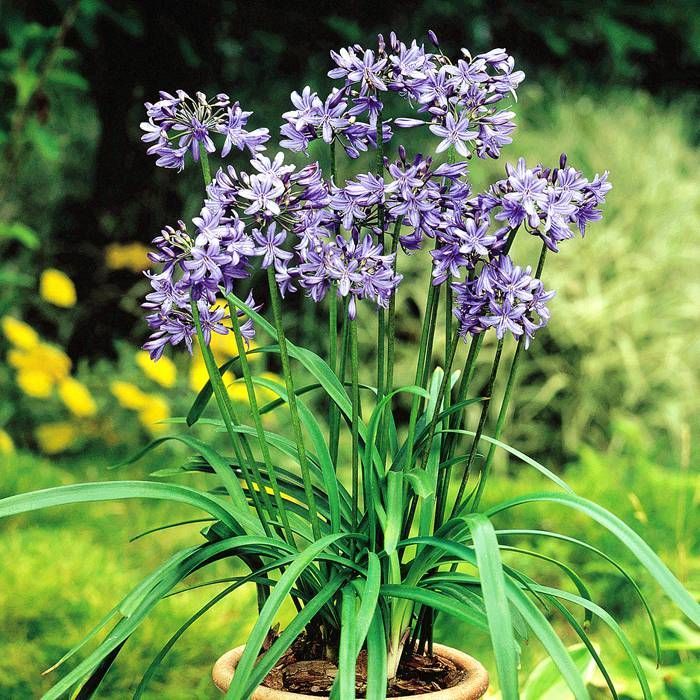Seasonal Agapanthus Care: Planning For Winter Season and Summertime
Seasonal Agapanthus Care: Planning For Winter Season and Summertime
Blog Article
Unleashing the Secret to Effective Agapanthus Growing: Advice for a Flourishing Garden
In the realm of horticulture, growing agapanthus successfully requires a critical approach that incorporates various facets of plant treatment. By recognizing the subtleties of agapanthus cultivation, one can produce a setting where these plants flourish and grow abundantly.
Planting Agapanthus: Best Practices
When growing Agapanthus, proper dirt prep work is essential for making certain effective development and advancement of these attractive flowers. Agapanthus, frequently referred to as Lily of the Nile or African lily, prospers in well-draining soil with a somewhat acidic to neutral pH degree - Agapanthus. Before growing, it is essential to amend hefty clay soils with raw material such as compost or peat moss to improve drainage and give essential nutrients for the plants
To grow Agapanthus, choose an area that receives complete sunshine to partial shade, as this will certainly advertise healthy growth and plentiful flowering. Dig a hole two times the diameter of the plant's origin round and place the Agapanthus at the same depth it was previously growing. Delicately backfill the hole with soil, weighing down strongly to eliminate any air pockets around the origins.
Water the freshly planted Agapanthus extensively and remain to keep the dirt equally damp, especially during the plant's energetic growing period. Agapanthus. Applying a balanced fertilizer once a month can even more support the plant's growth and blooming. By adhering to these finest practices for planting Agapanthus, you can develop a stunning display of these captivating blossoms in your garden
Perfect Dirt Issues for Agapanthus
For optimum development and blooming success of Agapanthus plants, making certain the soil conditions are suitable is crucial. Agapanthus chooses soil that is abundant in nutrients, so including a balanced plant food during the expanding season can promote healthy and balanced growth and dynamic flowers.

Watering and Fertilizing Tips
To ensure healthy and balanced development and lively flowers, correct watering and feeding techniques are crucial for effective Agapanthus cultivation. Agapanthus plants benefit from routine watering, especially throughout the expanding period.
When it concerns feeding Agapanthus, a balanced fertilizer with equal parts nitrogen, phosphorus, and potassium can be applied in the spring to promote healthy and balanced growth and blooming. Slow-release plant foods are suitable for providing nutrients slowly over a prolonged duration. Avoid over-fertilizing, as this can cause extreme vegetation development at the expense of blossoms.
In addition, incorporating raw material like compost right into the dirt can boost nutrient degrees and improve dirt structure, aiding in the general health of the Agapanthus plants. By complying with these watering and fertilizing pointers, gardeners can ensure their Agapanthus plants find flourish and generate magnificent screens of blossoms.
Trimming and Deadheading Strategies
Appropriate trimming and deadheading techniques play a critical role in maintaining the health and wellness and appearances of Agapanthus plants, matching the essential practices of watering and fertilizing for successful growing. Trimming Agapanthus includes getting rid of spent blossom heads, yellowing or dead leaves, and total shaping of the plant to advertise much better growth. Deadheading, the process of eliminating discolored flowers, not only improves the plant's appearance but additionally urges more flowering.
When deadheading Agapanthus, it is a good idea to snip off the flower stem at the base utilizing sharp, tidy shears. This procedure reroutes the plant's energy from seed manufacturing back into root and foliage growth, advertising a healthier and more robust plant. Normal deadheading can expand the blooming period of Agapanthus and stop self-seeding, which can cause overcrowding.
In regards to trimming, Agapanthus typically gain from a light trim after blossoming to clean up the plant and urge fresh development. Reducing the invested flower stems and eliminating any dead or damaged foliage assists maintain the plant's vitality and general look. Nonetheless, it is vital to stay clear of cutting right into the crown of the plant, as this can deteriorate its wellness.

Protecting Agapanthus From Vermins and Diseases
Applying effective bug and illness management techniques is important to safeguarding the wellness and vitality of Agapanthus plants in farming. Agapanthus are normally durable plants, however they can still succumb various parasites and conditions if not appropriately taken care of. One common pest that influences Agapanthus is the Agapanthus borer, a caterpillar that tunnels into the plant, causing damages to the leaves and blossoms. To stop infestations, routine examination of the plants is necessary. If borers are found, they can be by hand removed, or insecticidal soap can be made use of as a control measure.
In addition to bugs, Agapanthus are susceptible to illness such as root rot and fungal leaf places. By staying vigilant and dealing with insect and disease issues promptly, gardeners can help their Agapanthus thrive and thrive.

Conclusion
In final thought, successful cultivation of agapanthus calls for correct growing methods, perfect resource soil conditions, find out here ample watering and feeding, regular pruning and deadheading, and security from diseases and insects. By following these tricks and ideas, gardeners can make sure a prospering yard loaded with beautiful agapanthus blossoms. Agapanthus. Keep in mind to keep constant treatment and focus to detail to promote the wellness and durability of these magnificent plants
When growing Agapanthus, correct dirt preparation is crucial for making certain effective growth and growth of these stunning blossoms.Water the recently grown Agapanthus extensively and proceed to maintain the soil uniformly wet, especially throughout the plant's energetic expanding season.For ideal growth and flowering success of Agapanthus plants, making certain the dirt conditions are suitable is crucial. When growing or transplanting Agapanthus, make certain the soil is well-prepared to offer the necessary structure for the plants to develop themselves effectively. One typical insect that impacts Agapanthus is the Agapanthus borer, a caterpillar that tunnels into the plant, triggering damages to the blossoms and leaves.
Report this page